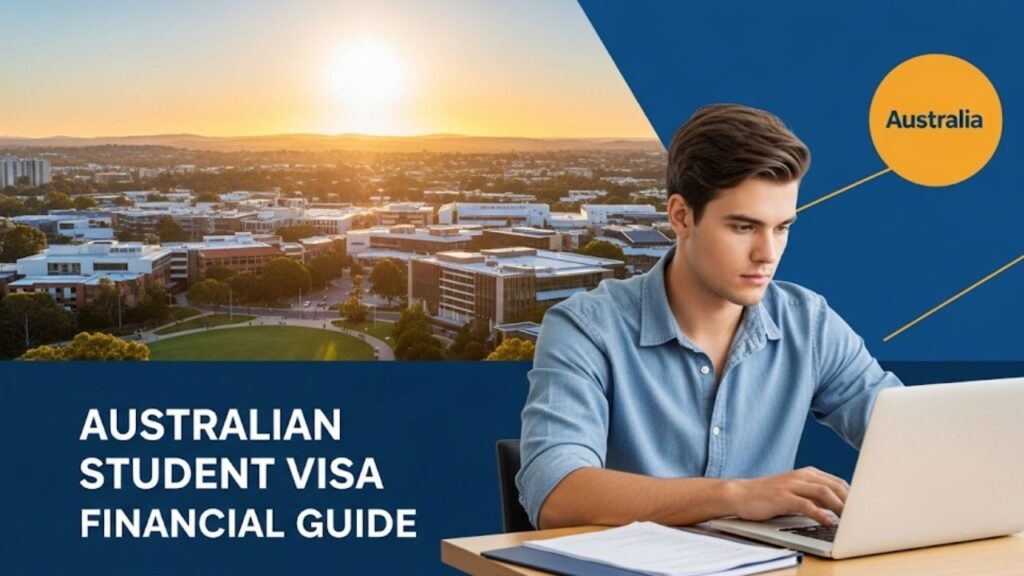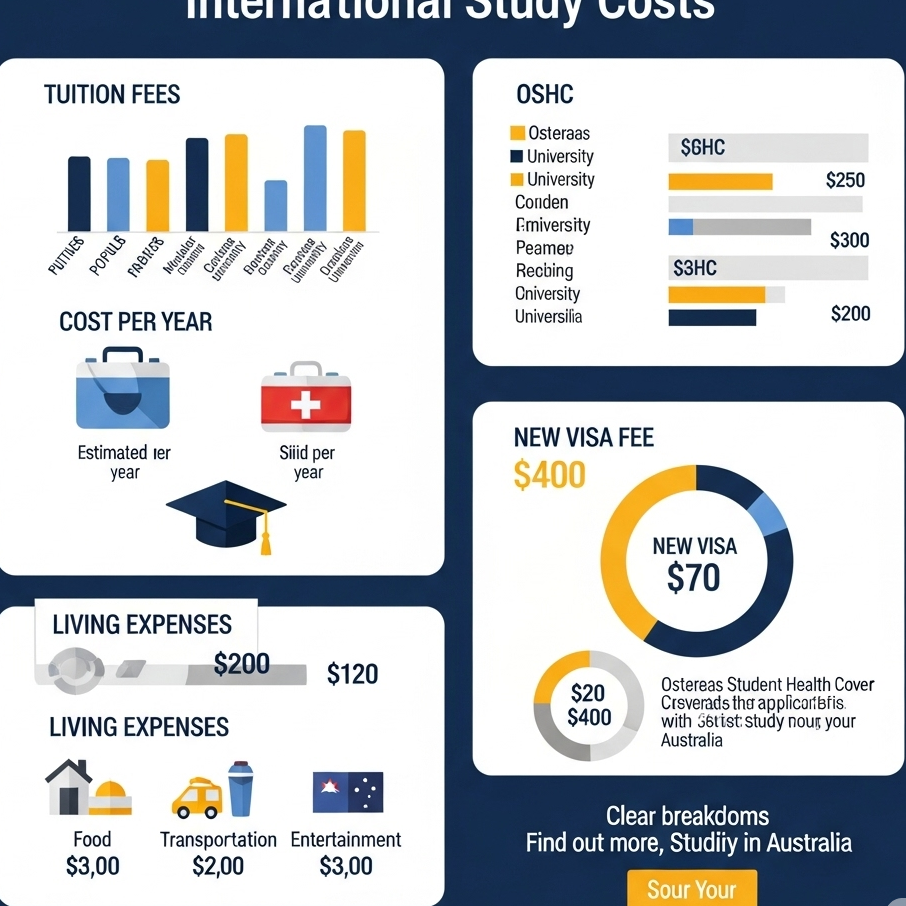A significant shift in the financial landscape for prospective international students is here. As of July 1, 2025, the Australian student visa fees have been increased to AUD $2,000.1 This change, confirmed by the Australian Department of Home Affairs, marks a considerable adjustment in the cost of planning your educational journey down under. But don’t let this headline figure deter you. With careful planning and the right information, your dream of studying in Australia is still very much within reach. This comprehensive guide will walk you through everything you need to know about this new fee structure and how to successfully navigate your financial planning.

For many aspiring students, the news of a fee increase can be unsettling. In my experience advising countless applicants, the financial component of studying abroad is often the most daunting hurdle. However, I’ve also seen that with strategic preparation, it is a hurdle that can be comfortably cleared. Think of this new fee not as a barrier, but as a revised budget line item in your overall “Study in Australia” project plan. It’s an upfront cost that, with foresight, can be managed effectively.
Australia student visa fees
| Key Fact | Detail/Statistic | Source (Linked) |
| New Visa Fee | The application fee for the Student visa (subclass 500) is now AUD $2,000. | Department of Home Affairs |
| Effective Date | This new fee applies to all applications lodged on or after July 1, 2025. | The PIE News |
| Increased Financial Capacity | You must now show proof of funds for living expenses amounting to AUD $29,710 for the first year. | Department of Home Affairs |
Understanding the “Why” Behind the Fee Increase
The Australian government has positioned this fee adjustment as a measure to ensure the sustainability and integrity of its world-class international education sector. The stated goal is to ensure that students arriving in Australia are well-prepared for their studies and living expenses, thereby reducing the risk of financial hardship and visa-related issues after arrival. While it places a higher initial financial demand on students, the intention is to foster a more stable and supportive environment for those who do make the journey.
This move is part of a broader strategy that also includes more stringent English language requirements and increased scrutiny of applications to ensure they are from genuine students.
Your Comprehensive Financial Checklist for Studying in Australia
The visa application charge is just one piece of a much larger financial puzzle. A successful application and a stress-free study period depend on a holistic and realistic budget. Let’s break down the key financial components you need to prepare for.

1. The Student Visa Application Charge (VAC)
- Primary Applicant Fee: AUD $2,000
- Additional Applicants: If you are bringing family members with you, there will be additional charges for each dependent.
It’s crucial to budget for this amount as a non-refundable, upfront cost in your application process.
2. Proof of Financial Capacity: The Living Cost Requirement
This is arguably the most critical financial element of your visa application. As of May 2024, the Australian government requires students to demonstrate they have access to AUD $29,710 to cover their living costs for the first 12 months of their stay.
- For a primary applicant: AUD $29,710
- For a spouse or partner: an additional AUD $10,394
- For a dependent child: an additional AUD $4,449
These funds must be genuine and accessible to you. Acceptable evidence can include:
- Deposits of money from a financial institution.
- Government or institutional loans.
- Scholarships or similar financial support.
3. Tuition Fees
This will be your largest expense. Tuition fees in Australia vary widely depending on the institution and the course of study.3
- Undergraduate Bachelor’s Degree: AUD $20,000 to $45,000 per year
- Master’s Degree and PhD: AUD $22,000 to $50,000 per year
Always check the specific course fees on your chosen university’s website for the most accurate information.
4. Overseas Student Health Cover (OSHC)
It is a mandatory requirement for all international students to have OSHC for the entire duration of their visa.5 The cost can vary based on the provider and the level of cover.
- Estimated Cost: Approximately AUD $478 for 12 months for a single student.
Actionable Steps to Navigate the New Financial Landscape
Feeling overwhelmed? Let’s turn this information into a clear, actionable plan.
Step 1: Research and Create a Master Budget (12-18 Months Before Application)
- Shortlist Universities: Identify 3-5 universities and list their specific tuition fees for your desired course.
- Estimate Living Costs: Use the government’s requirement of AUD $29,710 as a baseline, but research the specific cost of living in the cities where your shortlisted universities are located (e.g., Sydney and Melbourne are generally more expensive than Adelaide or Perth).6
- Factor in All Costs: Build a spreadsheet that includes:
- Tuition Fees (for the first year)
- Living Expenses (AUD $29,710)
- Visa Application Fee (AUD $2,000)
- OSHC
- Airfares to Australia
- Initial establishment costs (e.g., accommodation bond, furniture)
Step 2: Explore Funding and Scholarship Opportunities (9-12 Months Before Application)
Don’t assume you have to foot the entire bill yourself. Australia offers numerous scholarships for international students.
- Australia Awards: These are prestigious scholarships funded by the Australian government, covering full tuition fees, travel expenses, and a contribution to living costs.
- University-Specific Scholarships: Most Australian universities offer a range of scholarships based on academic merit. Check the international student section of their websites.
- Research Training Program (RTP) Scholarships: For postgraduate research students, the RTP provides block grants to higher education providers to support students with their tuition fees and living costs.
Step 3: Assemble Your Financial Documents (3-6 Months Before Application)
Start gathering the evidence for your proof of financial capacity early.
- Bank Statements: Ensure they are from an acceptable financial institution.
- Loan Agreements: If you are funding your studies through an education loan, have the official sanction letter ready.
- Scholarship Letters: If you have been awarded a scholarship, the official letter will be a key part of your financial evidence.
I’ve seen many successful applicants use a combination of savings, a student loan, and a small scholarship to meet the financial requirements. The key is to have clear, official documentation for every source of funding.

The dream of studying in Australia – with its vibrant cities, stunning landscapes, and world-class education system – is a powerful motivator. The increase in the student visa fee is a new checkpoint on that journey, but it is not a roadblock. By understanding the requirements, planning meticulously, and starting your preparations early, you can approach your application with confidence.
Your Essential Guide to Australia Visa Multi-Factor Authentication (MFA) for ImmiAccount
FAQs
Q1: When did the Australian student visa fee increase to $2000?
The new student visa (subclass 500) application fee of AUD $2,000 became effective for all applications lodged on or after July 1, 2025.11
Q2: What is the total amount of money I need to show for my Australian student visa?
You need to demonstrate that you have enough funds to cover your tuition for the first year, plus living expenses of AUD $29,710, your travel costs to and from Australia, and the visa application fee itself.12
Q3: Can I get a waiver for the visa application fee?
Fee exemptions are very rare and are granted only in very specific circumstances. Most international students will be required to pay the full application fee.
Q4: Is this fee increase the only financial change I should be aware of?
No. The Australian government also recently increased the minimum amount of savings required for living expenses to AUD $29,710. It’s crucial to be aware of both these figures when planning your finances.










